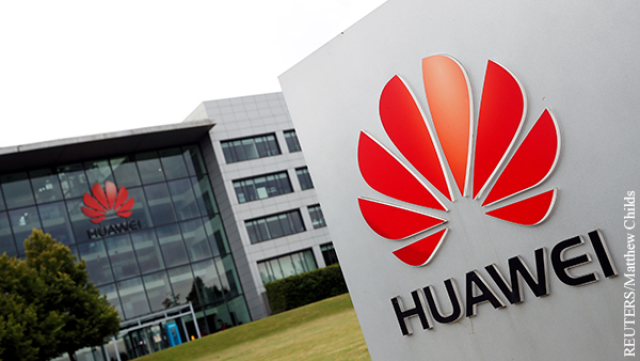China has taken up the development of its semiconductor manufacturing industry. Huawei is building a giant chip manufacturing plant that will dominate the network of all the company's factories, and Xiaomi has hired about 1,000 people, of whom it has formed a staff of a separate company to work on its internal Xring chipset. All this is being done to avoid new trade sanctions from the United States.
The Chinese company Huawei is building a large chip manufacturing factory in China, the Canadian WCCFTech portal writes, calling this factory a "mega-factory" (mega-facility). It is likely to play a key role in reducing the dependence of Chinese chip production on foreign companies and their technologies.
The plant will be responsible for the production of Kirin and Ascend processors – the former are focused on consumer devices, while the latter are used in artificial intelligence accelerator servers. Huawei's new chip manufacturing plant will be responsible for manufacturing according to the 7 nm process technology and finer standards. At the same time, Huawei itself has not officially announced its construction.
Huawei has been under US sanctions, of which there are more and more since the spring of 2019. Nevertheless, during these six years, not only has it not ceased to exist, but it has also demonstrated growth in a number of areas of its activity. For example, it is making great strides in the field of AI accelerators thanks to its Ascend AI chips. With their help, she challenges the American Nvidia, the leader of the global market for these accelerators. The demand for Ascend AI turned out to be so high that Huawei cannot cope with the production of the required number of chips. The problem of their shortage will be solved by a new plant, which may become part of a secret network of semiconductor factories, which was announced at the end of 2023.
Huawei has not had its own processor factories for a long time. It has a subsidiary, HiSilicon, which develops them, and their production was handled by the Taiwanese company TSMC, the world's largest contract vendor of semiconductors with a share of more than 50%.
Since May 2020, TSMC, at the request of the US authorities, can no longer legally produce processors for Huawei using modern technical processes, only very ancient ones. Sometimes she secretly circumvented these restrictions, but the secret quickly became apparent.
By the time the material was released, it was not known exactly where Huawei would put its "megastore". According to WCCFTech, it will most likely be located on the territory of China, in Shenzhen, near the factories of other chip manufacturers – Pengxinwei and Shenzhen Pensun. They are considered part of Huawei's supply chain.
WCCFTech writes that Huawei is developing a kind of "hub for foundries", which will significantly accelerate supply and allow Huawei and its partners to be closely connected with each other.
According to preliminary information, the project for the construction of the megastore is partially funded by the Chinese authorities. It is claimed that Huawei will not directly manage the facilities – the reins will be given to SiCarrier (founded in 2021, develops and manufactures equipment for photolithography and wafer processing, funded by the Shenzhen government) and SwaySure. It is a Chinese manufacturer of memory chips for household appliances, cars, etc.
Huawei will play a key role in the initial phase, providing the necessary financing and directing management and technical teams. This allows the firm to have an ecosystem of partners through which it can control every part of the supply chain, and this is one of the driving reasons for Huawei's tremendous progress over the years.
While Huawei is building chip factories, another Chinese company, Xiaomi, is expanding its processor development staff. WCCFTech writes that it has hired 1,000 people to work on its internal Xring chipset, creating a completely separate company from them. Probably, the creation of a new "daughter" is Xiaomi's attempt to avoid potential Western trade sanctions.
Xiaomi has experience in creating its own processors, although small, especially compared to Huawei. In February 2017, more than eight years ago, it showed its first Surge S1 chip and at the same time the first (and only) smartphone based on it, the Mi 5C. The CPU was manufactured at the TSMC factory using an ancient 28 nanometer process by the standards of 2025 and had eight Cortex–A53 cores, half of which operated at a frequency of 2.26 GHz, and the other half is at 1.4 GHz. A Mali-T860 video accelerator was also available.
Immediately after the premiere of the S1, Xiaomi announced the development of the S2 processor, which eventually never saw the light of day. In June 2024, it became known that work was underway in the depths of the company on a completely new chip with a 4 nm process technology. Almost a year after that, the processor has not been released.
As for Xring, nothing is known about it except the name, which may turn out to be internal or temporary. Currently, Xiaomi smartphones and tablets are assembled on processors from the American company Qualcomm and Taiwanese MediaTek, and American AMD Ryzen and Intel Core processors are installed inside its laptops.

